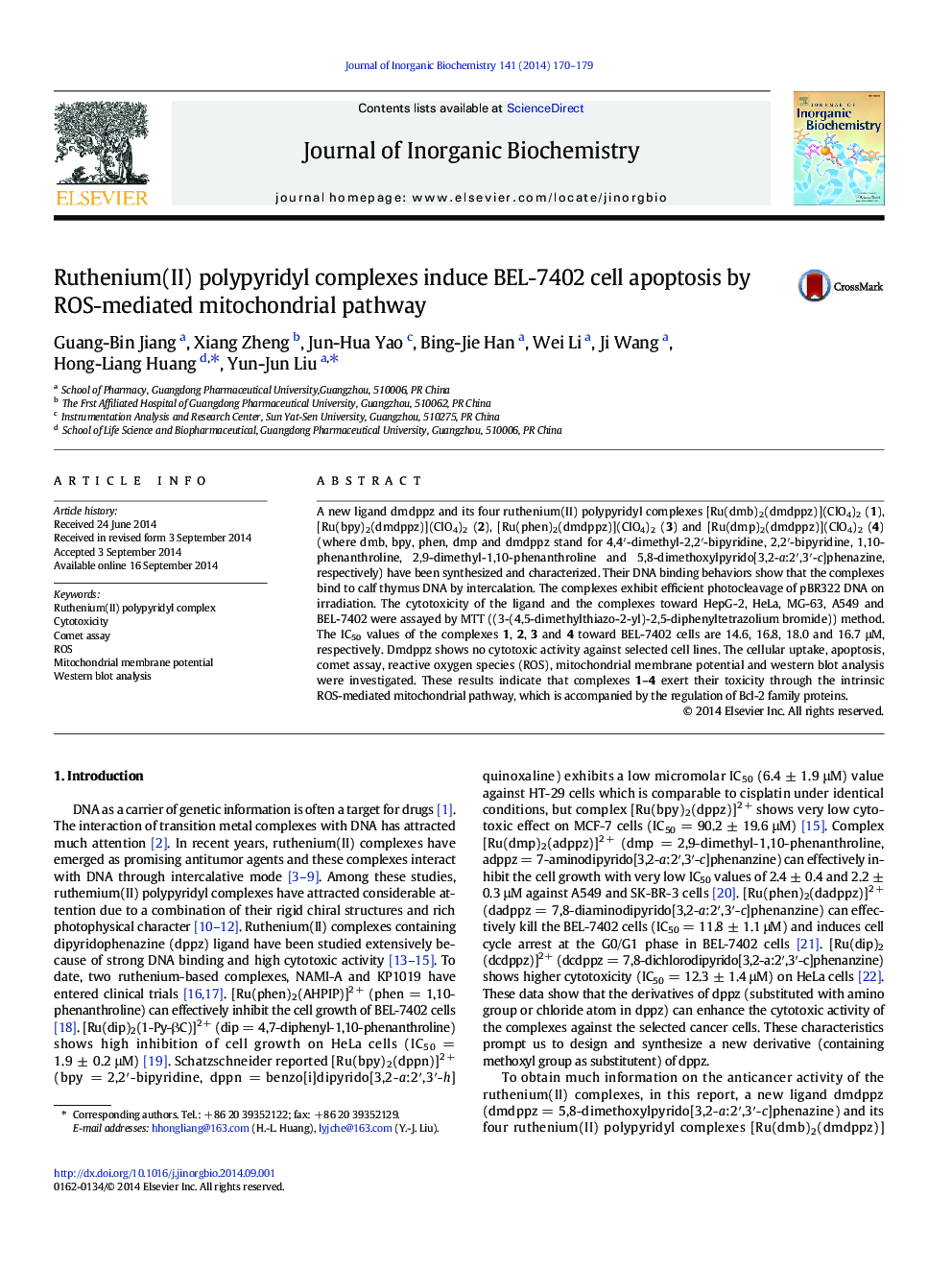| کد مقاله | کد نشریه | سال انتشار | مقاله انگلیسی | نسخه تمام متن |
|---|---|---|---|---|
| 1317270 | 1499446 | 2014 | 10 صفحه PDF | دانلود رایگان |

• Four new ruthenium (II) complexes were synthesized and characterized.
• The cytotoxicity of these complexes was evaluated by MTT method.
• The apoptosis was investigated by AO/EB staining method and comet assay.
• Reactive oxygen species and mitochondrial membrane potential were investigated.
• The cell cycle arrest and western blot analysis were studied.
A new ligand dmdppz and its four ruthenium(II) polypyridyl complexes [Ru(dmb)2(dmdppz)](ClO4)2 (1), [Ru(bpy)2(dmdppz)](ClO4)2 (2), [Ru(phen)2(dmdppz)](ClO4)2 (3) and [Ru(dmp)2(dmdppz)](ClO4)2 (4) (where dmb, bpy, phen, dmp and dmdppz stand for 4,4′-dimethyl-2,2′-bipyridine, 2,2′-bipyridine, 1,10-phenanthroline, 2,9-dimethyl-1,10-phenanthroline and 5,8-dimethoxylpyrido[3,2-a:2′,3′-c]phenazine, respectively) have been synthesized and characterized. Their DNA binding behaviors show that the complexes bind to calf thymus DNA by intercalation. The complexes exhibit efficient photocleavage of pBR322 DNA on irradiation. The cytotoxicity of the ligand and the complexes toward HepG-2, HeLa, MG-63, A549 and BEL-7402 were assayed by MTT ((3-(4,5-dimethylthiazo-2-yl)-2,5-diphenyltetrazolium bromide)) method. The IC50 values of the complexes 1, 2, 3 and 4 toward BEL-7402 cells are 14.6, 16.8, 18.0 and 16.7 μM, respectively. Dmdppz shows no cytotoxic activity against selected cell lines. The cellular uptake, apoptosis, comet assay, reactive oxygen species (ROS), mitochondrial membrane potential and western blot analysis were investigated. These results indicate that complexes 1–4 exert their toxicity through the intrinsic ROS-mediated mitochondrial pathway, which is accompanied by the regulation of Bcl-2 family proteins.
DNA-binding behaviors of the complexes were investigated. Cytotoxicity was assessed by MTT method. Apoptosis, comet assay, ROS, mitochondrial membrane potential, cell cycle arrest and western blot were studied.Figure optionsDownload as PowerPoint slide
Journal: Journal of Inorganic Biochemistry - Volume 141, December 2014, Pages 170–179